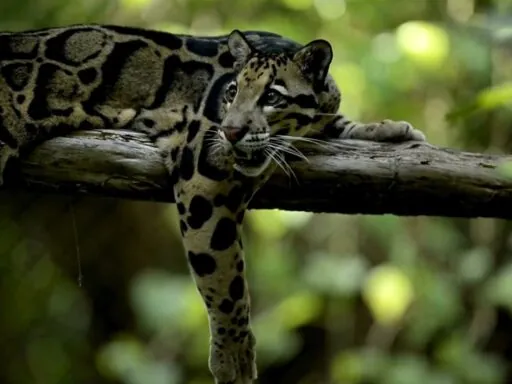Picture yourself in ancient oceans where gigantic creatures swam, bigger than anything we know today. These sea dinosaurs, some as long as a bus, were the kings of the deep. In this article, we’ll introduce you to the top 10 biggest sea dinosaurs, ranked by their size, and explain what made these giants so special. Let’s dive in and meet the biggest water dinosaurs!
1. Shastasaurus
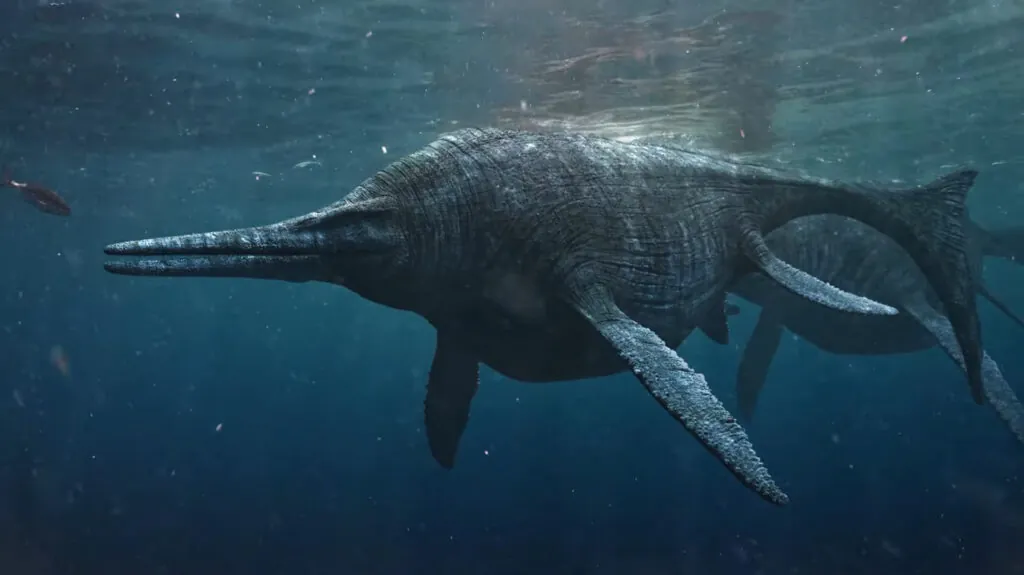
The Shastasaurus was the biggest marine reptile, reaching up to 68 feet in length, about the size of a modern sperm whale. Unlike many of its ichthyosaur relatives, it had a slender, streamlined body, making it a more specialized swimmer.
Amazingly, Shastasaurus lacked teeth, which suggests it was a suction feeder, likely preying on soft-bodied animals like squid. This unique feeding method set it apart from other large ichthyosaurs, which were often apex predators. Fossils of Shastasaurus have been found in North America and Asia, primarily in regions that were once part of the ancient Pacific Ocean.
2. Mosasaurus
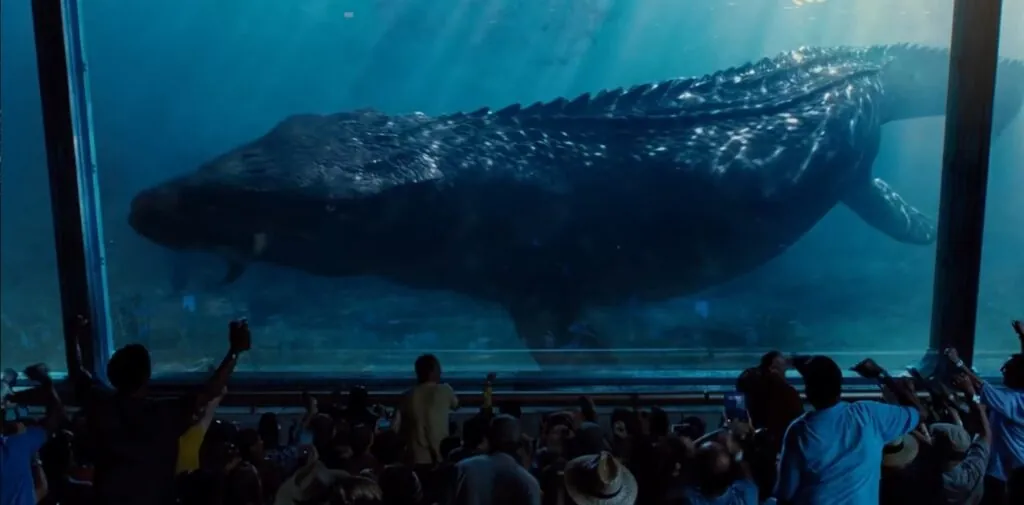
Mosasaurus, one of the largest marine reptiles of the Cretaceous period, could reach up to 59 feet (18 meters) in length. This apex predator thrived in shallow seas, preying on a variety of marine life, including fish, sharks, and even other mosasaurs.
Mosasaurus’s size estimates vary, with some specimens potentially reaching 57 feet (17 meters) and weighing over 25 tons, making it one of the largest known marine predators of its time. Despite its massive size, much of what we know comes from fossilized skulls, as complete skeletons are rare, leaving the full extent of its size open to scientific debate.
3. Shonisaurus
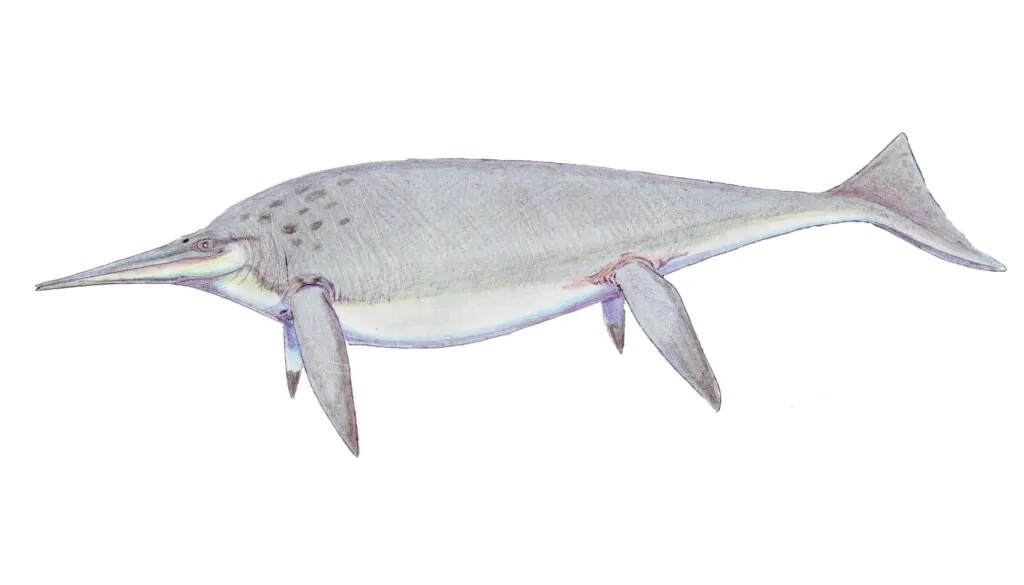
Shonisaurus, one of the largest marine reptiles of the Triassic period, could grow up to 50 feet (15 meters) long. Unlike other ichthyosaurs, Shonisaurus had a more streamlined body with a unique tail structure that allowed it to swim using a sideways motion, similar to modern whales. It lacked teeth as an adult, likely feeding on soft-bodied prey like squid by gulping them whole, resembling the feeding habits of whale sharks. Fossils of Shonisaurus, one of the biggest sea dinosaurs, were found in landlocked Nevada, which was once part of the Pacific Ocean during the Triassic period.
4. Elasmosaurus
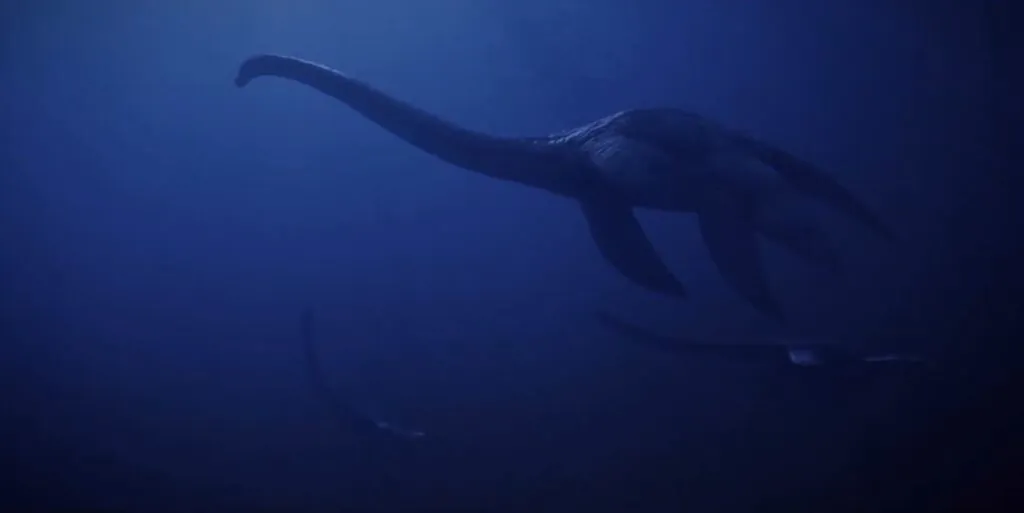
Elasmosaurus was a remarkable marine reptile and one of the largest plesiosaurs, measuring up to 46 feet long, with nearly half of its length attributed to its incredibly elongated neck, which contained 71 vertebrae—the most of any known animal.
Unlike other marine reptiles, Elasmosaurus could not raise its neck significantly above water due to its weight and structure, making it a specialized underwater predator. Interestingly, the first fossil of Elasmosaurus was discovered in Kansas, an area once covered by the Western Interior Sea during the Late Cretaceous period, highlighting how prehistoric seas once spread over North America.
5. Tylosaurus
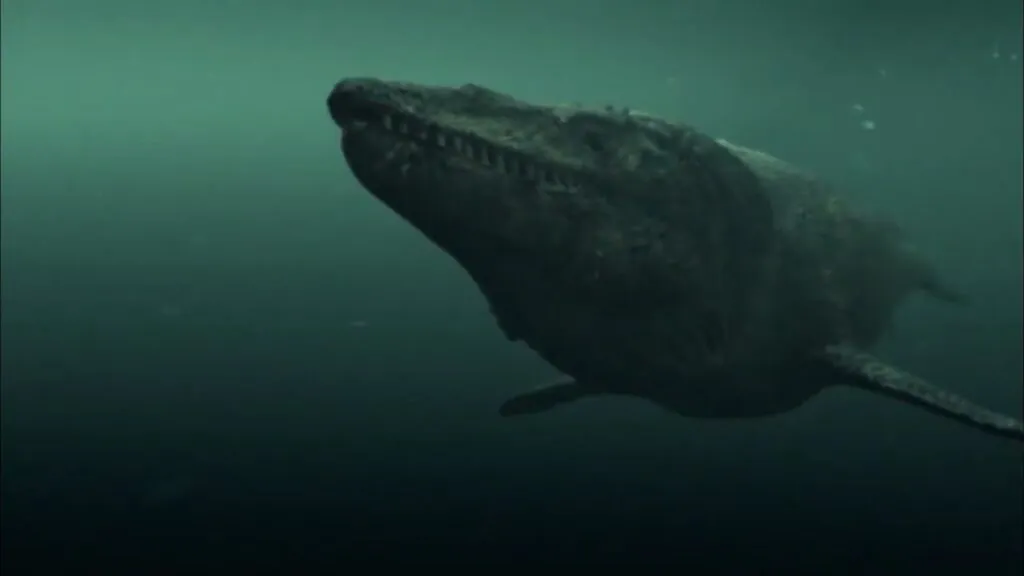
Tylosaurus, one of the largest mosasaurs, could grow up to 46 feet long, making it one of the apex predators of the Late Cretaceous seas. Unlike earlier marine reptiles that relied on their flippers for movement, Tylosaurus used its powerful, elongated tail for propulsion, allowing it to swim efficiently through the water. Its streamlined body and long, sloping skull minimized drag, enhancing its speed and agility.
Tylosaurus, one of the biggest sea dinosaurs, was not just fast but also a versatile hunter, capable of preying on fish, seabirds, and even other marine reptiles, including plesiosaurs and smaller mosasaurs. Its massive jaws, lined with rows of teeth, were designed to grasp and swallow prey whole, and the toothless, reinforced snout was likely used to ram and disorient its prey.
6. Thalassomedon
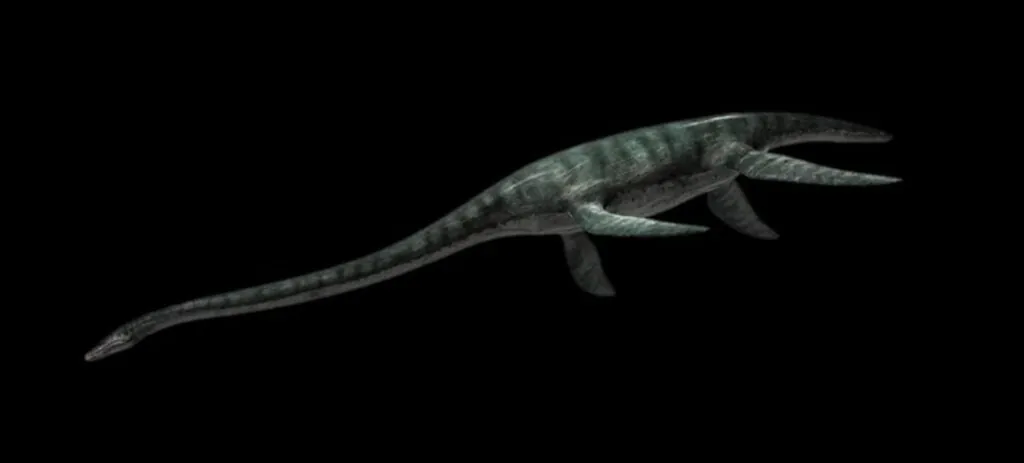
Thalassomedon, known as the “ruler of the sea,” was a massive plesiosaur that lived during the Late Cretaceous period about 95 million years ago. This marine reptile was around 35.6 feet long, with a neck that stretched up to 19 feet, containing 62 vertebrae, which allowed it to twist and turn gracefully in the water.
Weighing approximately 9,000 pounds, Thalassomedon had four large flippers, each about 5 to 6.6 feet long, aiding its powerful swimming capabilities. Interestingly, scientists discovered stones in its stomach, believed to help with flotation and digestion, offering a glimpse into the fascinating adaptations of this ancient predator.
7. Pliosaurus
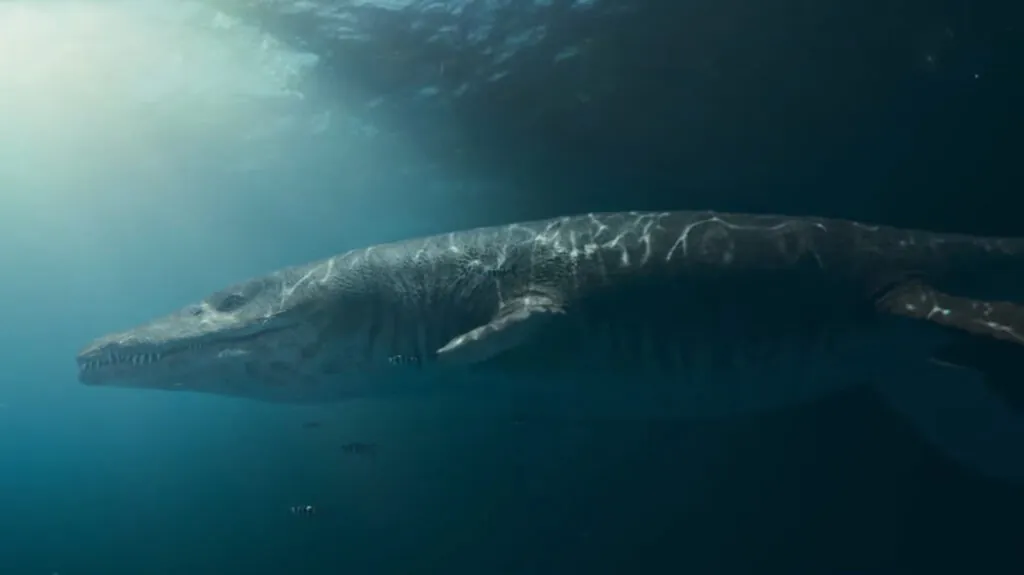
Pliosaurus, a dominant marine reptile of the Late Jurassic period, measured up to 40 feet long and weighed around 25-30 tons, rivaling the size of modern whales. Known for its massive jaws, short neck, and robust body, Pliosaurus was a formidable predator, preying on fish, squids, and other marine reptiles.
In spite of its fearsome size, it faced significant competition from more agile predators like Mosasaurs, which contributed to its decline. Additionally, environmental changes, such as shifts in ocean temperatures, may have further driven Pliosaurus to extinction around 145 million years ago.
8. Liopleurodon
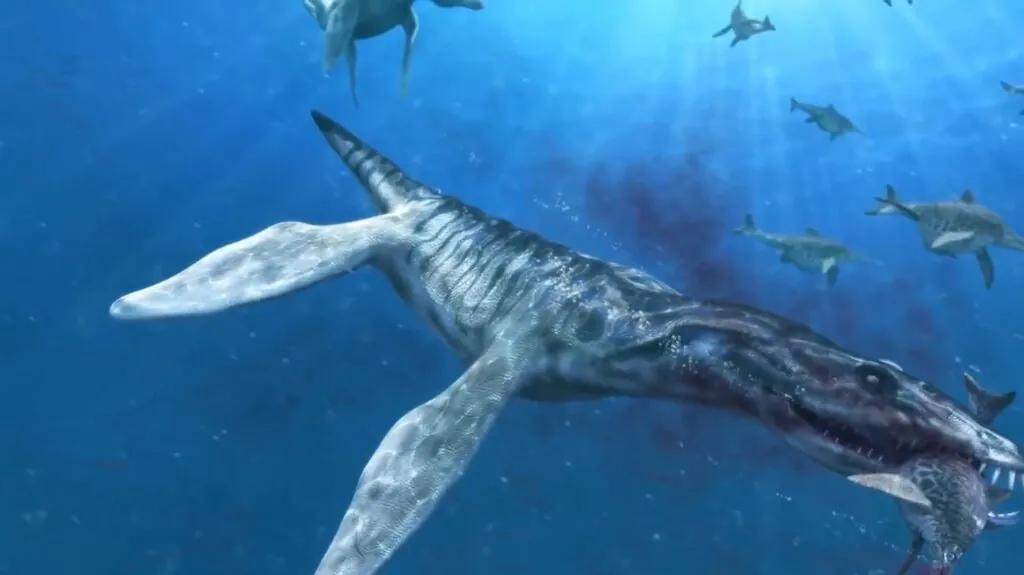
Liopleurodon, a massive marine reptile from the Jurassic Period, was known for its formidable hunting prowess, reaching lengths of up to 23 feet (7 meters). Despite its size, this pliosaur was an agile predator, capable of speeds between 23-28 mph (37-45 km/h). Its powerful jaws could exert a tremendous bite force, allowing it to crush hard-shelled prey like turtles and ammonites. Interestingly, Liopleurodon, one of the biggest sea dinosaurs, may have given birth to live young, akin to modern marine mammals, rather than laying eggs like other reptiles.
9. Kronosaurus
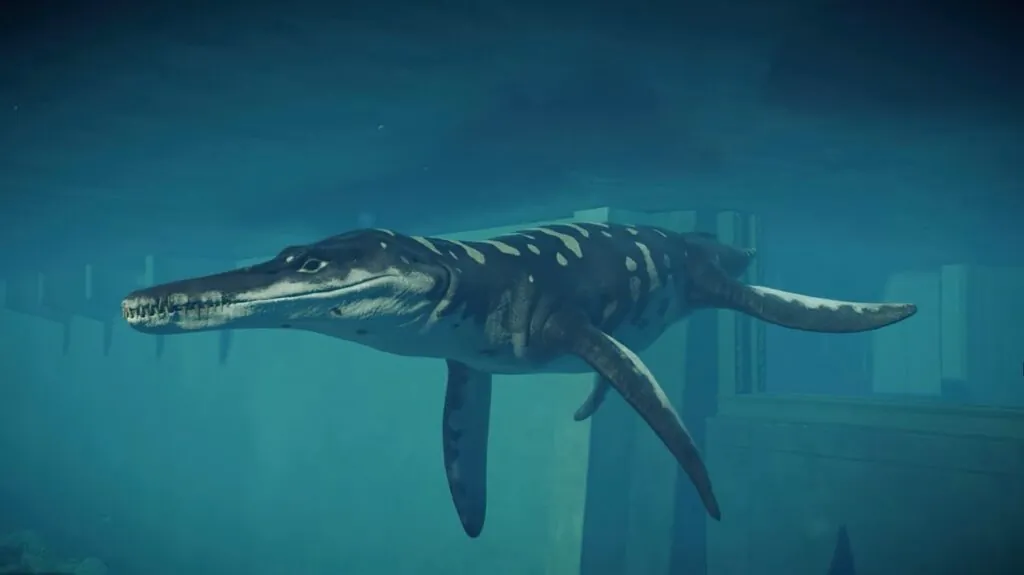
Kronosaurus, one of the largest marine predators of the Cretaceous period, reached lengths between 30 to 34 feet (9 to 10.5 meters), making it a formidable force in the oceans of Australia and Colombia. It had powerful jaws equipped with 12-inch teeth, and its diet included large marine reptiles such as plesiosaurs and turtles, evidenced by fossilized stomach contents found in Northern Queensland.
Amusingly, bite marks attributed to Kronosaurus have been discovered on other marine reptiles, indicating its aggressive predatory nature. Recent studies suggest previous size estimates may have been exaggerated due to inaccurate fossil reconstructions.
10. Megalneusaurus
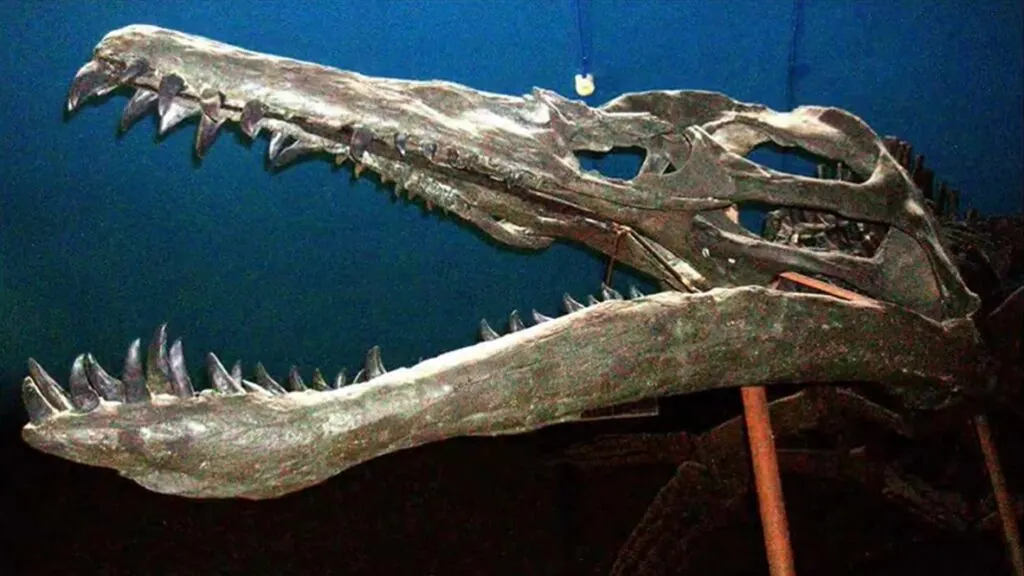
Megalneusaurus was a giant pliosaur that roamed the Jurassic seas around 157-152 million years ago during the Oxfordian stage. Discovered in 1895 by Wilbur Knight near Ervay, Wyoming, this massive marine reptile is one of the largest pliosaurids found in North America. Megalneusaurus had a robust body, a short neck, and an enormous skull filled with sharp teeth, traits typical of pliosaurs, which were formidable marine predators.
The partial skeleton discovered included a complete hindlimb, parts of the pectoral girdle, ribs, and vertebrae. While no skull material has been found, estimates suggest Megalneusaurus could have reached lengths of about 25-30 feet.
In ranking top 10 biggest sea dinosaurs, the primary criterion was their estimated size, specifically their maximum length based on fossil evidence. Size estimations were derived from skeletal remains, including skulls, vertebrae, and limb bones, which provided crucial insights into their overall dimensions. Additionally, these rankings consider both the completeness and reliability of the fossil record for each species, acknowledging that some size estimates may vary due to incomplete fossils or new discoveries.


